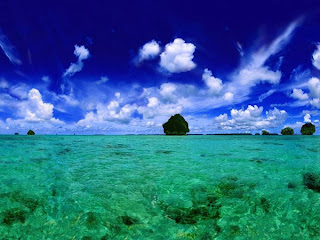Sir Isaac Newton lived a fairly long and productive life. Born on 1642 and died on 1727. He is an English natural philosopher who contributed the new theory of light and color and the principle of calculus. He is also the proponent of the three laws of motion, law of universal gravitation and that made him as a revolutionist during the 17th century.
Isaac Newton’s interest in mathematics sprung from his undergraduate days at Cambridge University. There he became acquainted with Descartes’ Géométrie, John Wallis’ Arithmetica infinitorum and other works by great mathematicians. Also, he made his contributions to analytical geometry, algebra, and calculus. Newton discovered the binomial theorem, new methods for infinite series and “direct and indirect methods of fluxions”. Still during his days at the Cambridge University he studied optics. His discoveries and experiments involved light, prisms, colors and degree of refrangibility. His most famous experiment, experimentum crucis, demonstrated his theory of light. Newton also is the proponent of Corpuscular Theory, researched mechanics and published several literary works.
”If I have seen further than others, it is by standing upon the shoulders of giants.” - Isaac Newton
_____________________________________________________
Albert Einstein is a famous German/Swiss/American physicist renowned all over the world. Born on the year 1879 and died on 1955. He is famous for his work on Theory of Relativity and mass-energy equivalence: E=mc2. The compass was the first expression of Einstein’s curiosity on science at the age of five. On 1889, he started his quest for facts and information on science through the inspiration of a family friend. Albert Einstein graduated at The Federal Polytechnic with a degree in physics.
1905 is the year known as Einstein’s “Wonderful Year”, it is the year when his Theory of Relativity was created and he applies it to mass and energy and formulated the famous equation E=mc2. Also at the same year, he has published four papers in the Annalen der Physik, the leading German physics journal. He became a privatdozent at the University of Bern and was appointed professorship of theoretical physics at Zurich University, German University of Prague, and at University of Berlin. He wrote papers on critical opalescence, cosmology. In 1917, he was appointed Director of Kaiser Wilhelm Institute for Physics in Berlin. He was awarded the Nobel Prize in physics in 1921.
His various works involved: Quantum mechanics and unified field theory was founded and publication of The World As I See It and The Einstein-Podolsky-Rosen Paradox, recommended nuclear research and worked with the Research and Development of the U.S. Navy on Ammunition and Explosives. He was appointed Chancellor of Germany by Adolf Hitler on January 1933 and Chairman of the Emergency Committee for Atomic Scientists and was offered presidency of the State of Israel. And he died on April 17, 1955 due to internal bleeding at Princeton Hospital.
_____________________________________________________
Both scientific philosophers revolutionized the field of science and the community in their own respective ways. They both contributed through their various researches, experiments, discoveries and scholarly publications. Physics and mathematics are the common interests of these scientists.
References:
Albert Einstein Timeline (n.d). Retrieved on September 28, 2010 from http://www.history-timelines.org.uk/people-timelines/26-albert-einstein-timeline.htm
BBC (n.d). Isaac Newton. Historic Figures. Retrieved on September 28, 2010 from http://www.bbc.co.uk/history/historic_figures/newton_isaac.shtml
Hatch, R. (2002). Sir Isaac Newton. The Scientific Revolution Homepage. University of Florida. Retrieved on September 28, 2010 from http://www.clas.ufl.edu/users/ufhatch/pages/01-Courses/current-courses/08sr-newton.htm





